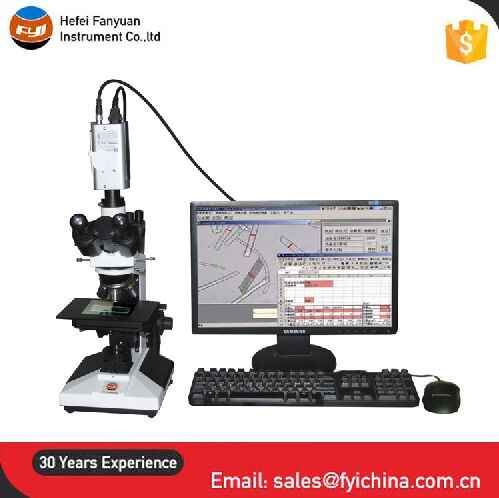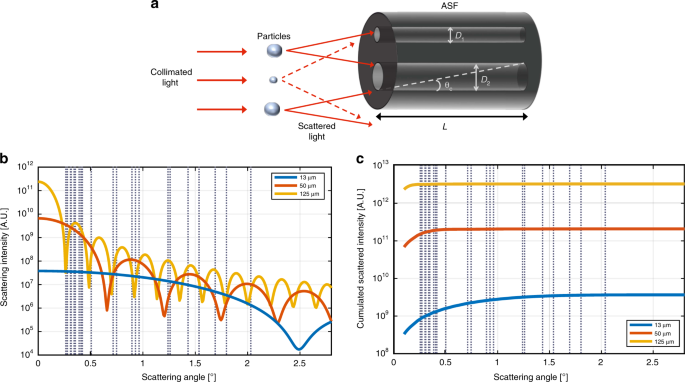How an Optical Fibre Diameter Analyser Delivers Consistent Results
How an Optical Fibre Diameter Analyser Delivers Consistent Results
Blog Article
Maximize Your Fiber Optic Performance: Comprehending Optical Fiber Size Analyser Technology
The performance of fibre optic systems is critically affected by the accuracy of their size, an element commonly neglected in the search of optimum signal honesty. Understanding the innovation behind optical fiber size analysers exposes the detailed equilibrium between dimension accuracy and manufacturing top quality. These tools not only boost conformity with market criteria but also offer real-time understandings that can preemptively attend to potential issues. The implications of their usage extend beyond simple measurement; they can basically alter the landscape of fibre optic efficiency. What variables should one consider to harness their complete possibility?
Value of Optical Fibre Size
The size of optical fibre plays a crucial duty in determining the efficiency and effectiveness of communication systems. Conversely, smaller diameters tend to support less settings, which can boost signal quality and reduce crosstalk.

Furthermore, recognizing the diameter's effects can bring about set you back savings by reducing the requirement for signal boosting and repeaters in extensive networks (optical fibre diameter analyser). Finally, the significance of optical fiber size can not be overemphasized, as it directly influences the total performance and reliability of modern-day communication systems

Exactly How Diameter Affects Signal Quality
Signal quality in optical fibre systems pivots dramatically on the diameter of the fibre. A smaller sized diameter can lead to greater depletion rates, resulting in signal loss as light trips via the fibre.
Alternatively, bigger diameters normally enable for boosted light capture and lowered modal dispersion, enhancing signal clarity. In multimode fibres, a larger core diameter can sustain several light settings, however it may additionally introduce intermodal dispersion, which can deteriorate signal high quality. Picking the optimal fibre size is important for achieving the preferred performance in details applications.
Furthermore, the interaction between the fiber diameter and the wavelength of the light used plays an important role in establishing the efficient transmission range and general signal stability. Because of this, comprehending exactly how fibre size affects signal high quality is crucial for network designers and engineers making every effort to optimize optical fibre systems for reputable, high-speed data transmission.
Overview of Diameter Analyser Modern Technology
In several optical fibre manufacturing procedures, precise dimension of fibre size is necessary for ensuring constant performance and quality (optical fibre diameter analyser). Diameter analysers are innovative tools developed to examine the physical measurements of optical fibers with high accuracy. They employ innovative optical and laser technologies to gauge the diameter, ovality, and concentricity of the fibre, hence offering essential information for top quality control
These analysers can operate in-line throughout the production website here process or as part of off-line screening protocols. In-line systems enable real-time monitoring, permitting producers to adjust specifications quickly, thus preserving ideal manufacturing conditions. Off-line analysers, on the other hand, give detailed assessments of sets, guaranteeing that any type of discrepancies from defined tolerances are identified and dealt with.
Diameter analysers significantly add to the decrease of problems in optical fibers, improving overall item dependability. By continually gauging essential specifications, these technologies facilitate compliance with sector criteria and specs. As the demand for high-performance optical fibres remains to rise, the duty of diameter analysers becomes significantly vital in achieving the desired top quality and performance criteria in fibre optic systems.
Key Attributes of Fibre Size Analysers
Although different models of fiber size analysers exist, they typically share several essential attributes that improve their capability and dependability. One of the most significant attributes is high-resolution measurement capabilities, which make certain precise size readings, essential for preserving high quality control in fibre manufacturing. In addition, numerous analysers integrate innovative optical sensors created to identify minute variations in fibre size, hence supplying important data for process optimization.
Another vital attribute is real-time surveillance, permitting drivers to get immediate responses on fiber diameter throughout the manufacturing process (optical fibre diameter analyser). This capability promotes fast adjustments and lowers the possibility of defects. Many analysers likewise come furnished with easy to use interfaces, allowing operators to conveniently navigate with setups and information outputs
Additionally, robust information storage and evaluation capabilities are essential for tracking historical performance trends and guaranteeing conformity with market standards. These functions jointly contribute to the effectiveness of fiber size analysers in enhancing fibre optic efficiency.
Best Practices for Fiber Optimization

First, normal calibration of optical fiber diameter analysers is vital. This ensures exact measurements and minimizes potential inconsistencies that could influence efficiency. Next off, preserving a clean functioning setting is crucial; dirt and impurities can lead to indicate deterioration.
Furthermore, it is very important to choose fibres that meet certain application demands. This entails evaluating variables such as attenuation, data transfer, and environmental problems. Appropriate navigate to these guys setup methods ought to also be complied with, consisting of preventing sharp bends and too much stress, which can jeopardize fiber honesty.
Moreover, using advanced surveillance systems can promote real-time performance analyses, allowing prompt identification of problems. Normal testing and upkeep ought to be conducted to ensure that fibers stay within ideal functional parameters.
Last but not least, training personnel on the most current fiber optimization modern technologies and approaches will enhance their capacity to implement efficient techniques. By following these finest practices, organizations can considerably enhance the performance and life expectancy of their optical fibre systems, making certain efficient interaction and data transfer.
Conclusion
Finally, the combination of optical fiber size analyser innovation is important for making best use of fiber optic performance. By making certain exact measurements of fiber measurements, these analysers significantly improve signal quality and lower losses throughout information transmission. Regular calibration and upkeep of the analysers are necessary to support optimal efficiency and compliance with industry standards. Inevitably, the application of this innovation facilitates improved data transmission rates and reinforces signal stability, adding to the overall efficiency of fiber optic systems.
Signal quality in optical fibre systems a knockout post hinges substantially on the size of the fiber.In numerous optical fibre production processes, precise dimension of fiber size is important for making sure regular performance and high quality. As the need for high-performance optical fibers continues to increase, the role of size analysers comes to be increasingly crucial in attaining the desired high quality and performance requirements in fiber optic systems.
These functions jointly contribute to the effectiveness of fiber size analysers in optimizing fibre optic efficiency.
In verdict, the assimilation of optical fiber size analyser modern technology is essential for taking full advantage of fiber optic performance.
Report this page